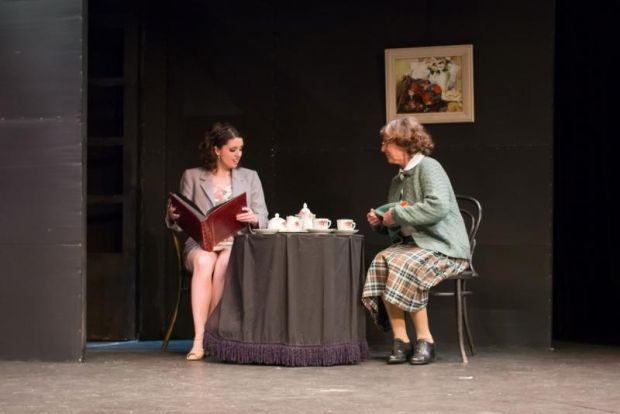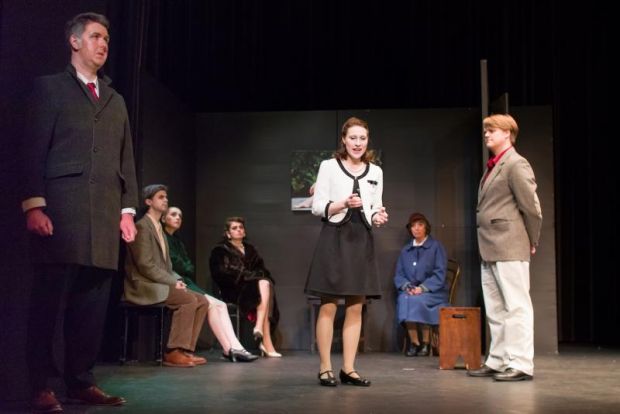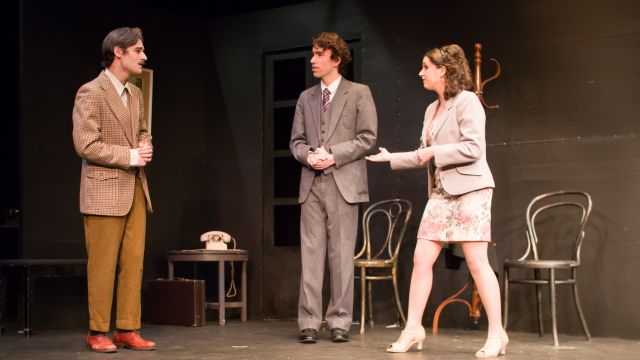Go Back for Murder
Director Scott Hunt described this play as a logistical nightmare. For so many reasons, there would have been cause for confusion in the mounting of this production. As well as the complexity of the script, there is the double cast and frequent changes of scene.
In a pre-COVID world, Carla and Caroline (mother and daughter) could have been played by the same actor. It would have been a wonderful challenge. Either Kate Vosper or Jean Ivey would have handled that task very well. In this world of COVID exigency plans, there is comfort in the idea that either woman has the ability. On opening night Vosper took the part of Carla. She was highly capable as the young American if a little uncomfortable in her short dress. Ivey, as the mother, gave the right balance of outward breeding and inner conflict.
Daniel Pendelbury was a hoot as Jeff Rogers and would doubtless have played the self-indulgent and charismatic Amyas Crale equally as well as it was given on opening night by Lochie Dew. Pendlebury’s role was small but memorable.

Kyle Enniss was a slimy Phillip Blake and Janet Smith was given an amusing role as the governess and executed it to the appreciation of the audience.
Often these Agatha Christie offerings are populated well-known old thespians. Delightfully, this is cast of predominately up-and-coming talents. As well as Vosper, Noah Sargant is one to watch. He is comfortable and assured on stage. Meredith Blake was not the best part for Sam French who has shone in other roles more adapted to his skills but he, like so many of them (Lauren Young or Maddeline Clifford, for example), could have stepped into any other part at a moment’s notice.
The scene changes which constituted the largest part of the “logistical nightmare” needed tighter choreography. The design of movable components was clever but clumsily executed and the preponderance of black was uninspiring. Music between scene changes might have been further used to facilitate this dilemma. Lighting was frequently inadequate with actors uncertain when the blocking and lighting plot were in conflict. All of this inelegance faded away, however, in the second act when the entire stage was used and populated, and the action careened to a conclusion.

Like a young man in Father’s greatcoat, this young group will grow into the mantle it has inherited.
Anne Blythe-Cooper
Subscribe to our E-Newsletter, buy our latest print edition or find a Performing Arts book at Book Nook.

